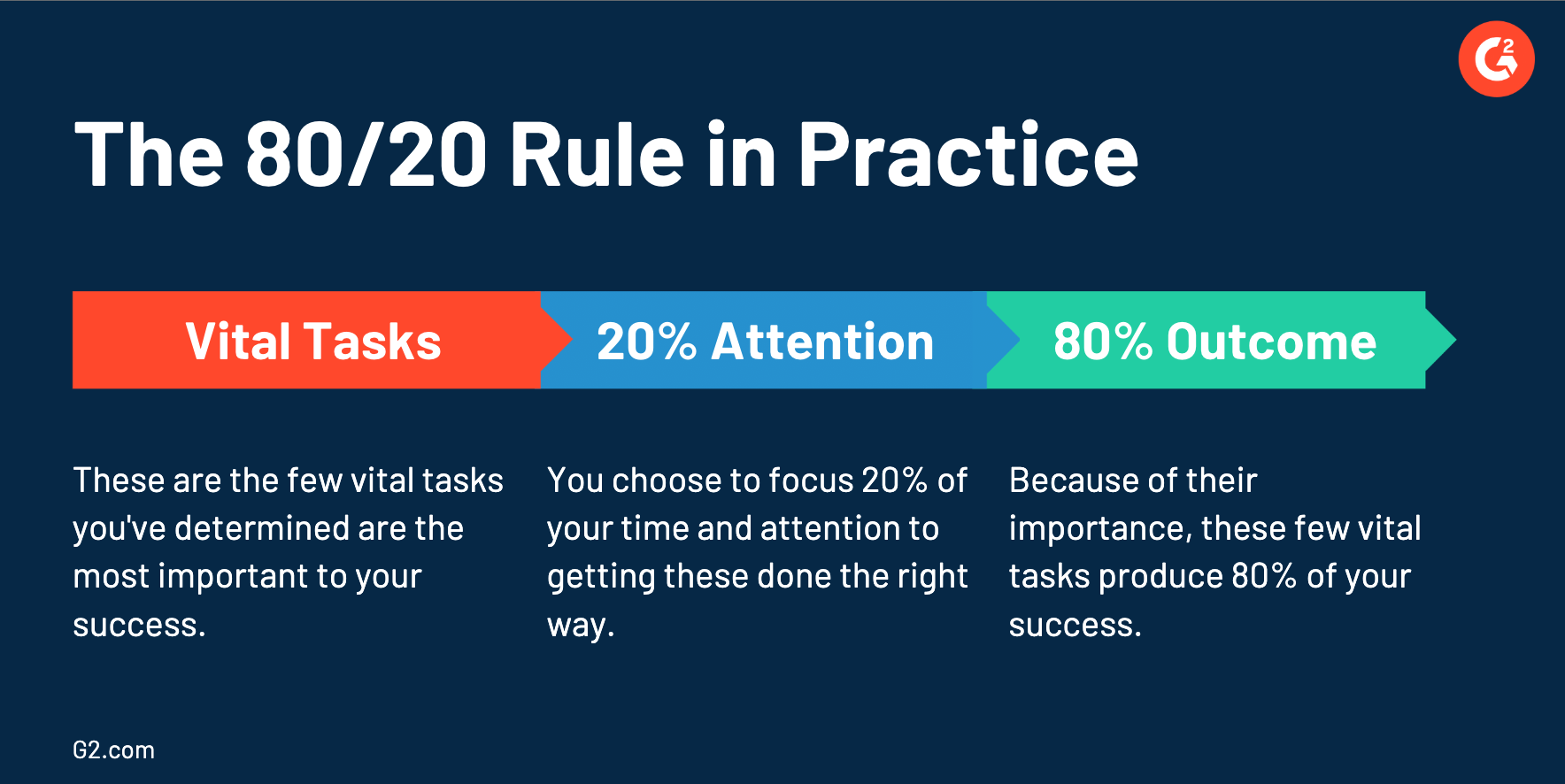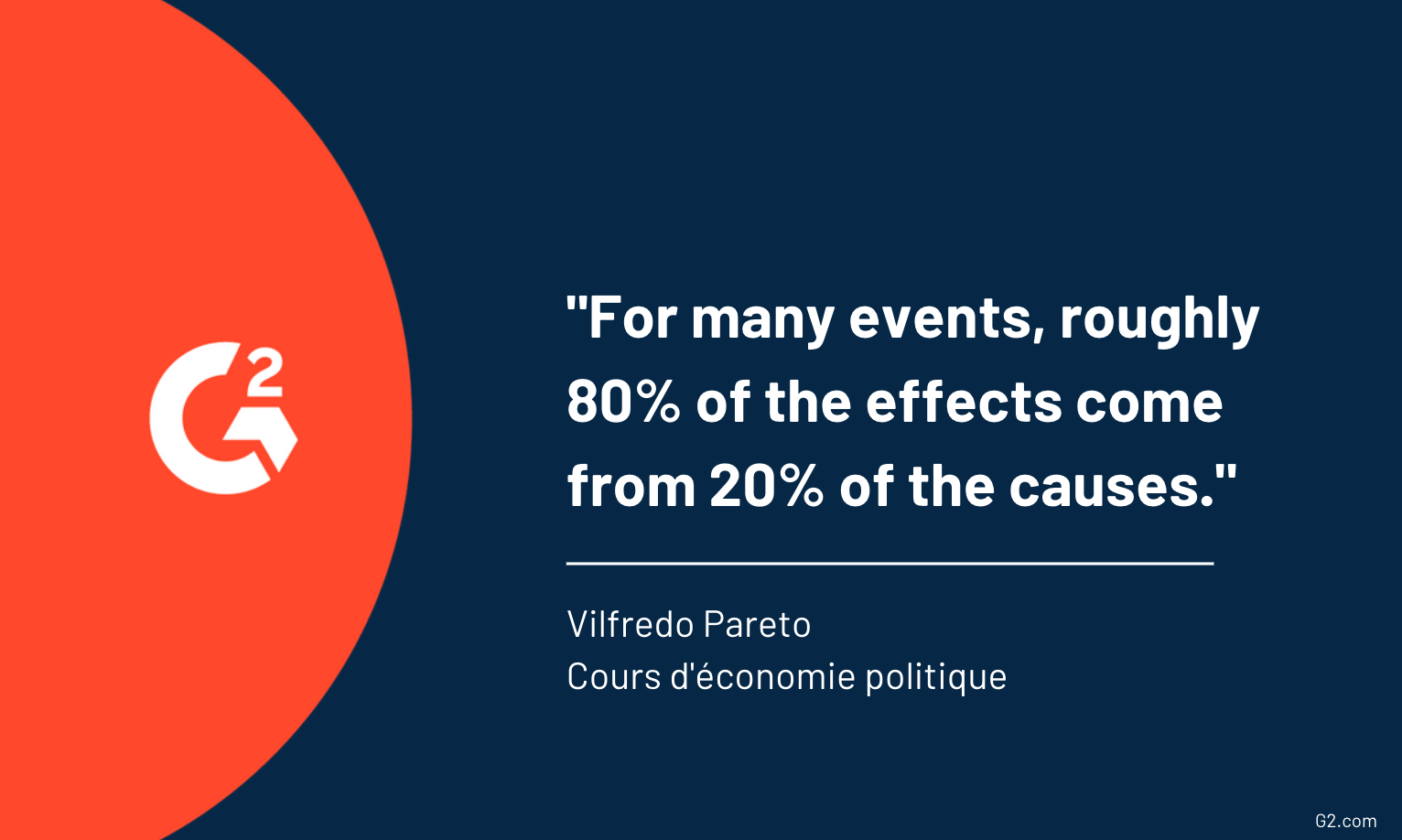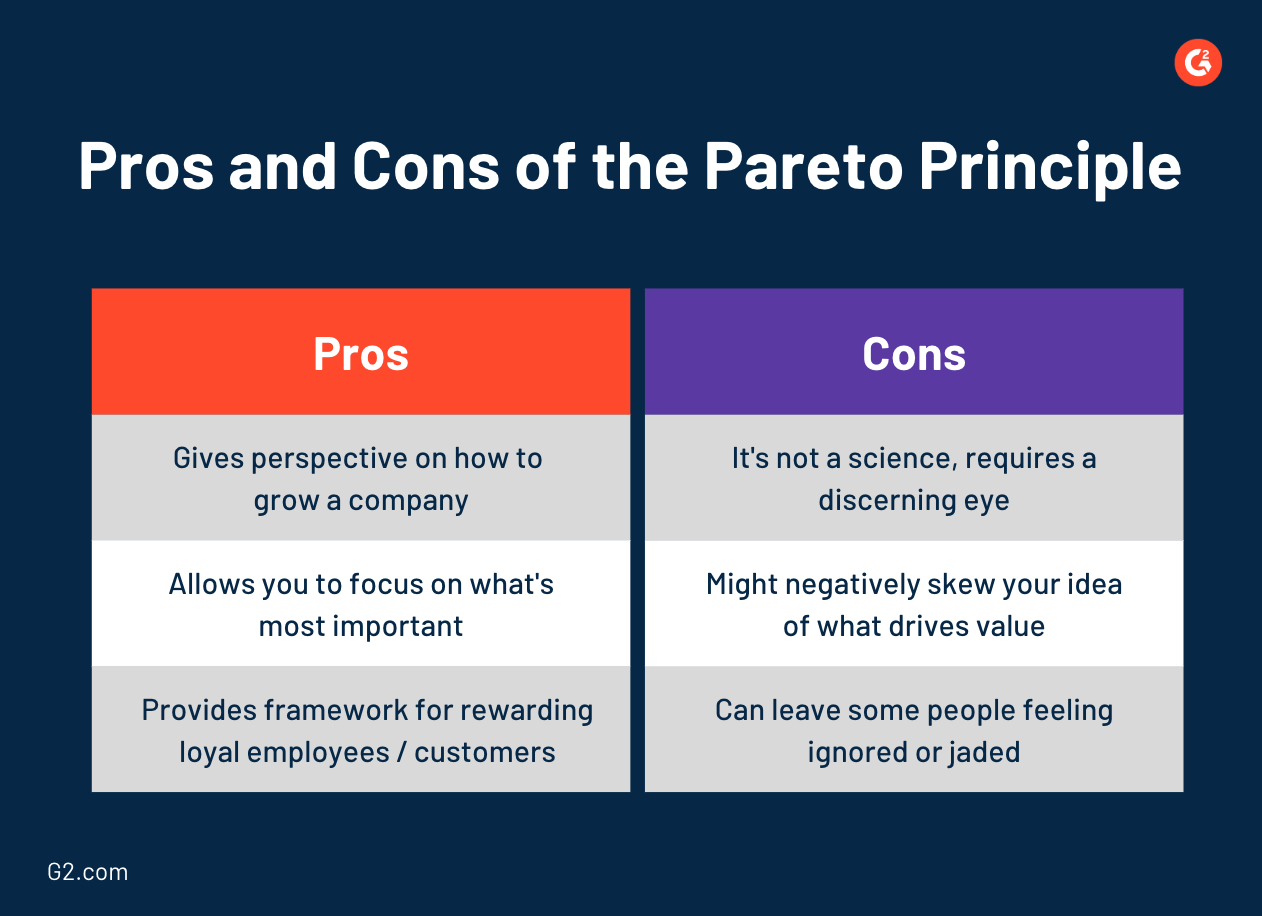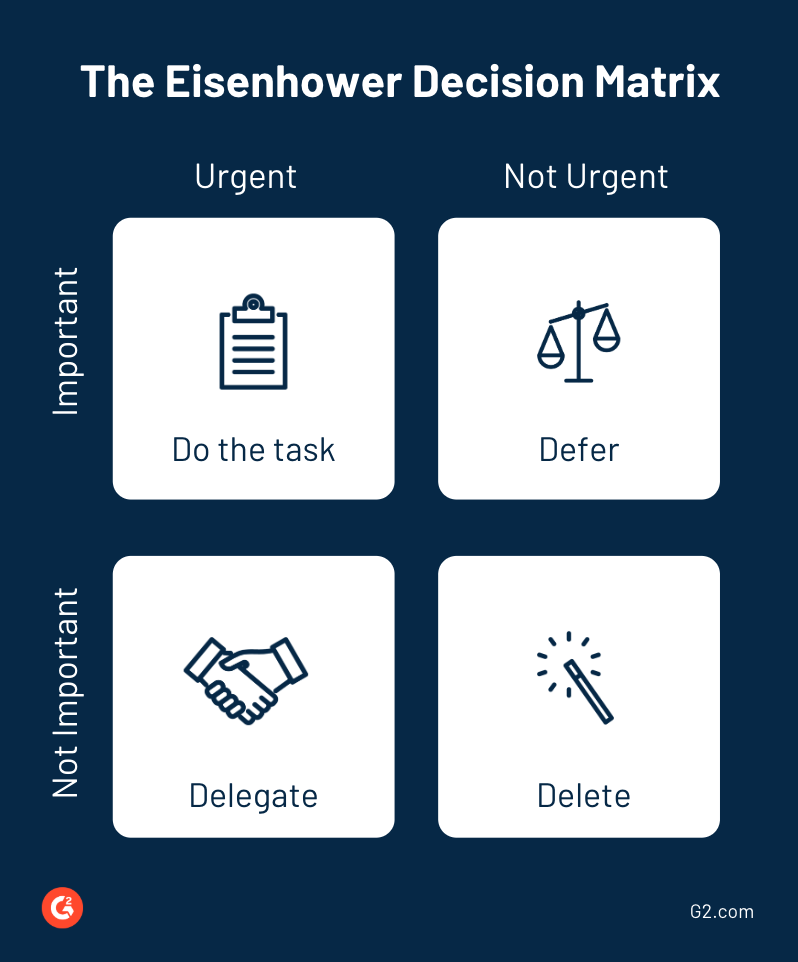We’d all love to work smarter and not harder, but how to accomplish that remains tricky.
For many of us, the issue with working smarter stems from our time management skills. There’s often too much time spent focusing on everything and not enough time focusing on the things that drive results.
There are many popular methods businesses use to streamline processes, one of the most popular being the Pareto Principle.
What is the Pareto Principle?
The Pareto Principle, also known as the 80/20 rule, says that 80% of results come from 20% of the causes. In business, it’s designed to help you focus on the 20% of efforts that are directly linked to outcomes that drive sales, revenue, and growth.
The Pareto Principle works by pinpointing what influences revenue and keeps customers happy. By focusing on the 20% of success drivers, teams can let the unimportant fall away. This will help you create a leaner, stronger team.
How does the Pareto Principle work?
At its very core, the Pareto Principle operates under the theory that most of your success will come from completing the few vital tasks that drive business.
These high-importance tasks and focus areas account for most of your success. It’s your 20%. That’s not to say that the other 80% won’t help drive sales and raise revenue. The Pareto Principle is designed to help you prioritize what deserves the most time and attention.

The Pareto Principle in real life
Let’s say you run a bakery and you have a reliable stream of customers who show up every morning. You sell a variety of baked goods, sandwiches, and even drinks. After a quick look at your sales over the last six months, you notice that your number one seller is coffee.
Compared to the amount of effort it takes to create everything else, brewing coffee in the morning takes about 20% of your energy. However, it accounts for about 80% of your overall sales.
Using the Pareto Principle to increase profits, you would want to focus on expanding your coffee selection before you focused on creating new food items for your menu. In this scenario, the coffee is your vital 20% and everything else falls into that 80%.
Want to learn more about Project Management Software? Explore Project Management products.
The history of the Pareto Principle
Believe it or not, the Pareto Principle is older than your grandparents! It all started back in the mid-1800s when an Italian engineer and economist named Vilfredo Pareto noticed something peculiar about the wealth distribution in Italy. Pareto observed that 80% of the land in Italy at the time was owned by a measly 20% of the population.

He decided to take his findings outside Italy and found this same principle applied to the other countries he studied. This first sighting of the 80/20 rule boiled down to one simple thought: oftentimes in life, things are not evenly distributed evenly.
The modern-day Pareto Principle
So, how do the observations about Italian land ownership turn into a project management methodology?
Enter Joseph Juran, a Romanian engineer and management consultant who took Pareto’s work on economics and applied it to the modern workforce. Juran argued that in almost any business situation about 80% of sales come from 20% of clients.
This idea was later expanded to include all aspects of a business, including employee performance and product success. Juran is credited with creating the modern interpretation of the Pareto Principle that businesses use today.
The future of the Pareto Principle
One of the coolest evolutions of the 80/20 rule has come with the rise of software as a service (SaaS) businesses. Companies that offer SaaS have to rely more heavily on strong customer relationships and the Pareto Principle helps immensely.
Customer success teams can pair the Pareto Principle with their current customer relationship management (CRM) software to track which customers have the most support needs, which drive the most revenue, and impact the bottom line the most.
Using the 80/20 rule in tandem with the technical side of CRM software can help you make sense of all the data. Keeping the Pareto Principle in mind, you can find the accounts that drive the most value for your company with your CRM data and make a point to put your efforts toward keeping those clients happy. It’s a win-win for you and your team!
Learn how CRM software can transform your relationship with your customers. Read user reviews from real users like you.
Pros and cons of the Pareto Principle
While there are some clear advantages to using the Pareto Principle, there are also some drawbacks. A common mistake when using this method is not adjusting the framework to for your team and your business. Before you go all-in on this new strategy, it’s important to know the risks.

Applying the Pareto Principle to your business
The Pareto Principle is nice in theory, but how should you put it into practice?
That depends on your role in your company. Managers and employees use the Pareto Principle very differently. How you apply this strategy also depends on what industry you work in.
Which industries use the Pareto Principle?
The simple answer is that every business can benefit from using the Pareto Principle. However, industries that focus on customer service or product manufacturing are better equipped than others to put the 80/20 rule into practice.
This is simply because they have consistent and measurable metrics for success (customers retained or products sold) that they can put into perspective using the 80/20 rule.
That’s not to say you can’t use the Pareto Principle in project management or human resources. It just means you’ll need to work harder to define what success looks like within the 80/20 framework.
Pareto Principle business examples
What makes the Pareto Principle so popular is that it can be applied to multiple aspects of the business world.
Here’s how the Pareto Principle can be used in different aspects of business:
- It can be assumed that 20% of your employees drive 80% of the output.
- It can mean that 20% of product features cause 80% of the program bugs.
- It can mean that 20% of your customers account for 80% of complaints.
All of these examples will help you make decisions about which accounts to focus on, which employees to reward, etc. The most important thing to remember is that the Pareto Principle isn’t a hard and fast rule, it’s a framework to guide decision making.
Using the Pareto Principle as an employee
The Pareto Principle isn’t just for managers or CEOs, you can use this strategy for your own time management. Whether you're looking to get a promotion soon or just hoping to become better at your job, these tips can help.
Using the 80/20 rule to manage up
Managing up refers to employees who actively pursue professional opportunities from their managers. These employees don’t wait for their boss to hand them assignments, they find what isn’t working and offer solutions.
Example: Jenna works on the content team as an associate and realizes that the peer review process isn't running as smoothly as it could be. Instead of waiting for someone else to say something, Jenna puts together a proposal and brings it to the attention of her boss. The proposal does more than point out the problem, it also offers the solution and gives Jenna the chance to manage a large project.
This is a classic example of managing up. Managers are people too and unless you raise your hand and ask for opportunities, you're stuck with what other people give you.
You can use the Pareto Principle to identify which of your daily tasks require the bulk of your focus, as well as what new opportunities you can jump on to boost that 80% output. In the example above, Jenna found a part of the process that wasn't working but was still necessary to the team's success. She said something and helped boost outcomes. These tactics will help turn you into a leader amongst your teammates.
Schedule your time smarter
For many of us, our job responsibilities were inherited from the person before us. There’s a good chance you’re doing something in your daily work that eats up a lot of your time and doesn’t produce great results.
One solution you can use is leveraging the 80/20 rule with the Eisenhower Decision Matrix. If a task of yours doesn’t produce highly desired outcomes, you can speak with your boss about delegating that task or even removing it entirely from your work.

If you can show your boss why something is a waste of your time and offer a solution for what to do next, you can adjust your role to better align with company goals. This shows that you’re innovating and thinking about ways you can work smarter with your time.
Advance your career
If you’re looking to seal the deal for a raise or a promotion, the Pareto Principle can help. Take a moment to inventory everything you’ve accomplished in the last year, like all of your revenue-driving projects, any accounts you helped close, etc. Identify everything you did that falls into that 80% of company growth and use it to your advantage.
Show your boss how your work specifically impacted the highest areas of growth for your team and the company. Argue what your new role should look like to help scale those projects, and ask for the money you think that work is worth! Make it easy for your boss to understand your value. Show them you’re in the top 20% of their performers.
Using the Pareto Principle as a manager
As a people manager, using the Pareto Principle can be a double-edged sword. It can help you pinpoint your high-performers but it can also leave employees feeling left out. Just because someone isn’t currently in your 20% of highest performers right now doesn’t mean they can’t get there someday. Perfecting this balancing act of strategy and empathy is crucial.
Focus your strategy
The 80/20 rule is perfect for forecasting team goals and overall company vision. Sit down with your team and figure out what 20% of your projects drive the most outcomes.
If you’re a product manager, figure out which of your product features customers value the most. If you’re a content manager, figure out which topics drive the most organic traffic. When you strip away the things that don’t drive results, you can help your team focus on what’s important.
Delegate work more efficiently
The biggest mistake you can make as a manager is only focusing on the 20% of employees that drive most of the output. Just because you have a handful of high performers doesn’t mean your other employees are expendable.
Instead, refocus workloads based on who delivers high outcomes. Put your top 20% of employees on important projects, the vital few tasks, and allow your moderate performers to pick up the 80% of work that doesn’t drive the biggest results.
And of course, track everything you delegate. Without the right tools, these delegated tasks can get lost and muddled along the way. Using project management software allows you to assign tasks to employees and track the project progress in one spot.
Discover how project management software can make delegating tasks easier than ever. Read real user reviews from people like you.
Don’t get too stuck on the numbers
The Pareto Principle is a framework for getting things done, it’s not a concrete rule. The breakdown for your company might look different than the typical 80/20. It might be as little as 90/10 or even as much as 40/60.
That’s why you should use it as a guide rather than gospel. Don’t just follow the Pareto Principle blindly without first applying it to your employees. Be willing to be flexible when applying it to your team and how they work.
All that said, it's important to always give it your best effort. Even though you can get 80% of the work done with 20% of the time, you still need 100% at the end to finish with a good, complete product or solution.
Focus on what matters
The Pareto Principle is a lens with which to view your daily workflows. Use this time management strategy to focus on the tasks that drive revenue, improve employee performance, and your overall productivity.
Curious how time management can change your life? Check out these productivity statistics that show just how much time you can save with a little extra effort.

Lauren Pope
Lauren Pope is a former content marketer at G2. You can find her work featured on CNBC, Yahoo! Finance, the G2 Learning Hub, and other sites. In her free time, Lauren enjoys watching true crime shows and singing karaoke. (she/her/hers)
